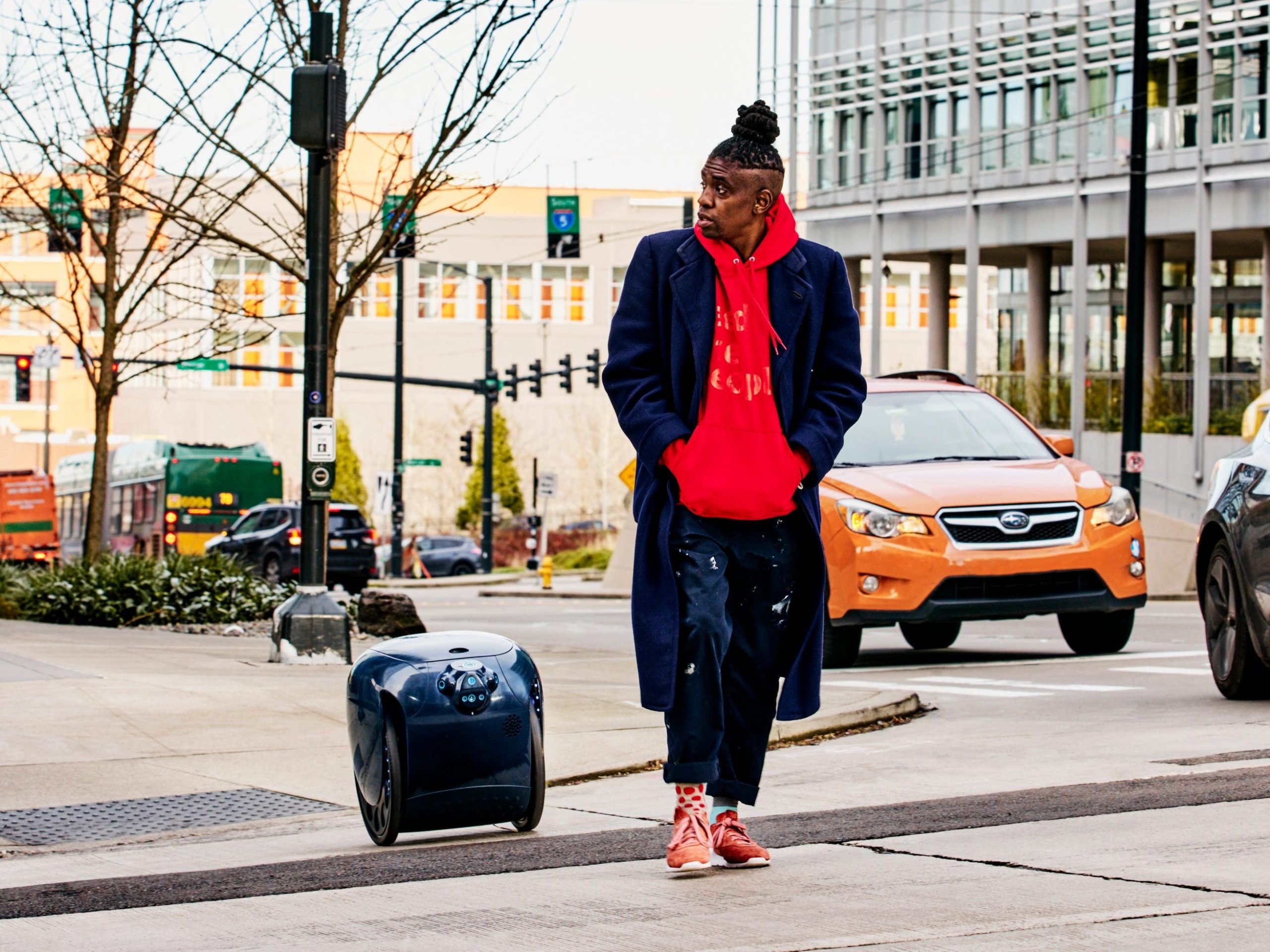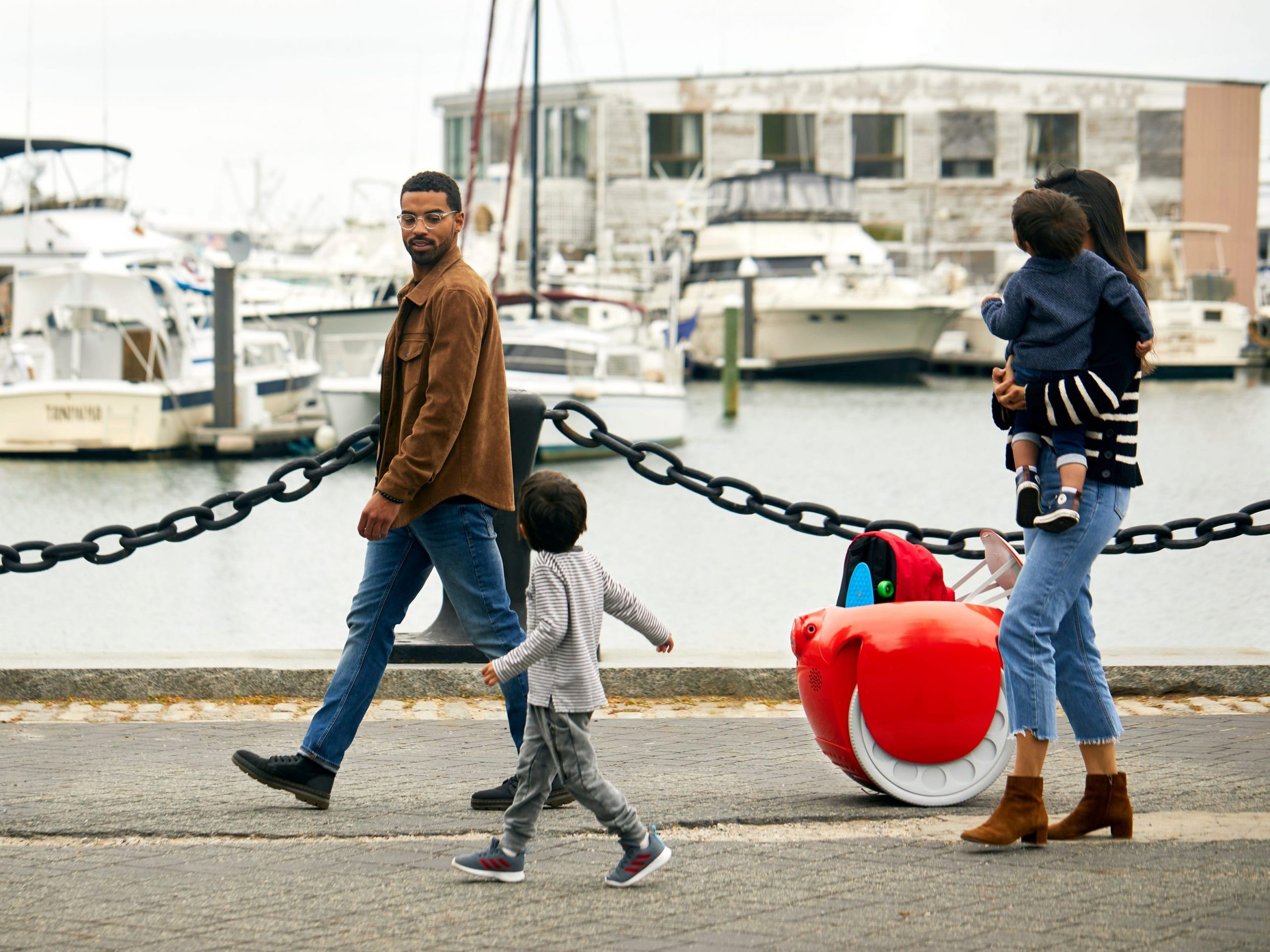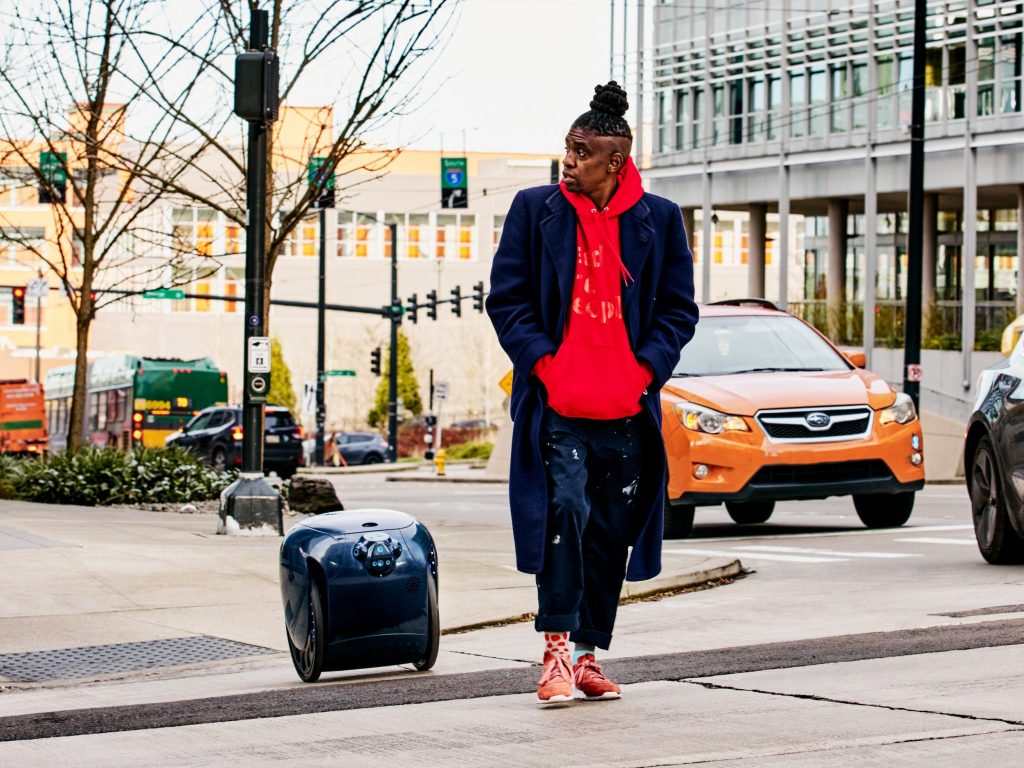
- Footage of a mobility-service robot, Gita, made the rounds on Instagram and Tik Tok last week.
- Gita's is designed to carry things for its owners and gain an edge in the "sidewalk robotics" market.
- Despite its high price, Gita's technology could change the transportation and disability-service space.
- See more stories on Insider's business page.
People were boggled at a viral Tik Tok, with over 2.5 million views as of Thursday, showing a woman being followed around a Georgia Whole Foods by a small orange robot.
In the video, the robot – serving similar vibes to Wall-E or a Star Wars droid – follows closely behind the woman even as she leaves the market, carrying her shopping bag.
"I saw the light up wheels that caught my attention," said Atlanta-based singer who goes by her stage name Sabiine, who recorded part of the original footage seen in the Tik Tok.
"Then I realized [the robot] was following [the woman in the video] and wasn't being manually operated! I thought it was cute and friendly looking… like maybe it would start talking to me."
The robot is Gita (pronounced jee-tah, after the Italian word for "a short trip"), and it is designed to carry things for its owners and follow them around their neighborhoods.
Rather than competing with personal delivery devices from Amazon or FedEx, Gita is trying to edge out the need for ride-shares and scooter sharing.
"For us, a Gita can replace a car or a second car for a family," says CEO Greg Lynn, co-founder of Gita's parent robotics company Piaggio Fast Forward.
Without the need for existing maps or area layouts, Gita uses built-in cameras and algorithms to recognize people and how they move. The device also has a large carrying capacity, holding 40 pounds of weight over 20 miles with one charge, a game changer for people shopping at the grocery or visiting friends.
Lynn, who has a background in architecture and urban design, noticed that more people are living in highly walkable areas, like suburbs and medium-sized cities.

"When we look at where we would like to make a dent in a market, it's in getting people to walk in their neighborhoods again, rather than always like pulling our phone out and calling a ride hail because it's people are walking a lot less.
According to data from Sherpashare, a company that provides driver analytics and ride data for ride-share companies, the average Uber ride is 5.41 miles, well within the traveling capacity for Gita.
Lynn and Gita's engineers have also seen that Gita's services and the ability to walk around a neighborhood has led to social and psychological health benefit, especially for those with disabilities.
They have already performed pilot programs with people with impaired sight and aging communities in Newcastle, UK.
"That's what we're hearing from Newcastle," says Lynn. "It's really great for people to just be out in the world and have contact with familiar strangers and have people."
Several comments in the Tik Tok video pointed out its $3000 price tag, making it out of reach for many. Lynn says he understands the concern, but with its technology - processing power, long service life, and sensor systems - he believes the cost is justifiable.
The company continues to find ways to make it affordable in its programming and engineering process.
I noticed that every time we showed it to anybody, even the most skeptical person, the minute they press the button and moved and it followed them, they smiled," said Lynn. "So for us, that was kind of like personally the thing that really drove me and also drove the company is just the magic of the thing."
Dit artikel is oorspronkelijk verschenen op z24.nl

